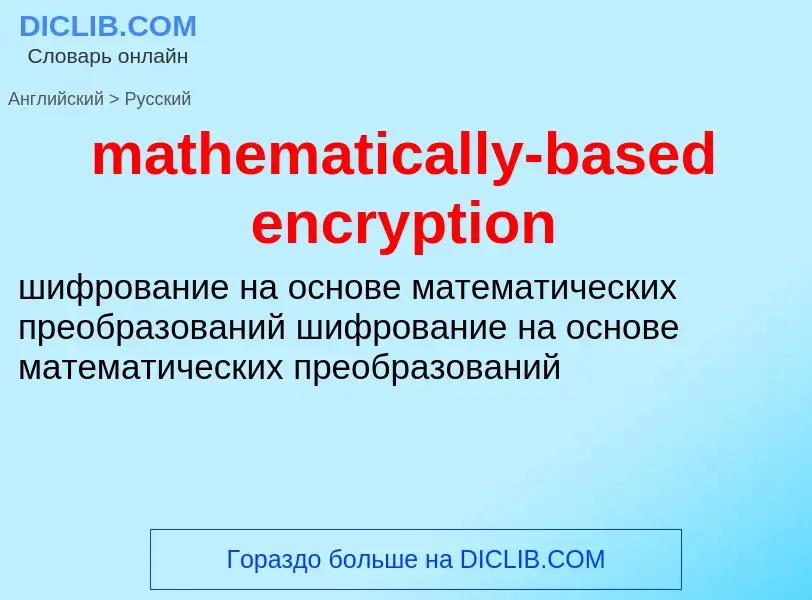Traducción y análisis de palabras por inteligencia artificial ChatGPT
En esta página puede obtener un análisis detallado de una palabra o frase, producido utilizando la mejor tecnología de inteligencia artificial hasta la fecha:
- cómo se usa la palabra
- frecuencia de uso
- se utiliza con más frecuencia en el habla oral o escrita
- opciones de traducción
- ejemplos de uso (varias frases con traducción)
- etimología
mathematically-based encryption - traducción al ruso
Definición
Wikipedia
ID-based encryption, or identity-based encryption (IBE), is an important primitive of ID-based cryptography. As such it is a type of public-key encryption in which the public key of a user is some unique information about the identity of the user (e.g. a user's email address). This means that a sender who has access to the public parameters of the system can encrypt a message using e.g. the text-value of the receiver's name or email address as a key. The receiver obtains its decryption key from a central authority, which needs to be trusted as it generates secret keys for every user.
ID-based encryption was proposed by Adi Shamir in 1984. He was however only able to give an instantiation of identity-based signatures. Identity-based encryption remained an open problem for many years.
The pairing-based Boneh–Franklin scheme and Cocks's encryption scheme based on quadratic residues both solved the IBE problem in 2001.


![DES cracking machine]] contained 256,856 custom chips and could brute-force a DES key in a matter of days—the photo shows a DES Cracker circuit board fitted with several Deep Crack chips. DES cracking machine]] contained 256,856 custom chips and could brute-force a DES key in a matter of days—the photo shows a DES Cracker circuit board fitted with several Deep Crack chips.](https://commons.wikimedia.org/wiki/Special:FilePath/Board300.jpg?width=200)
